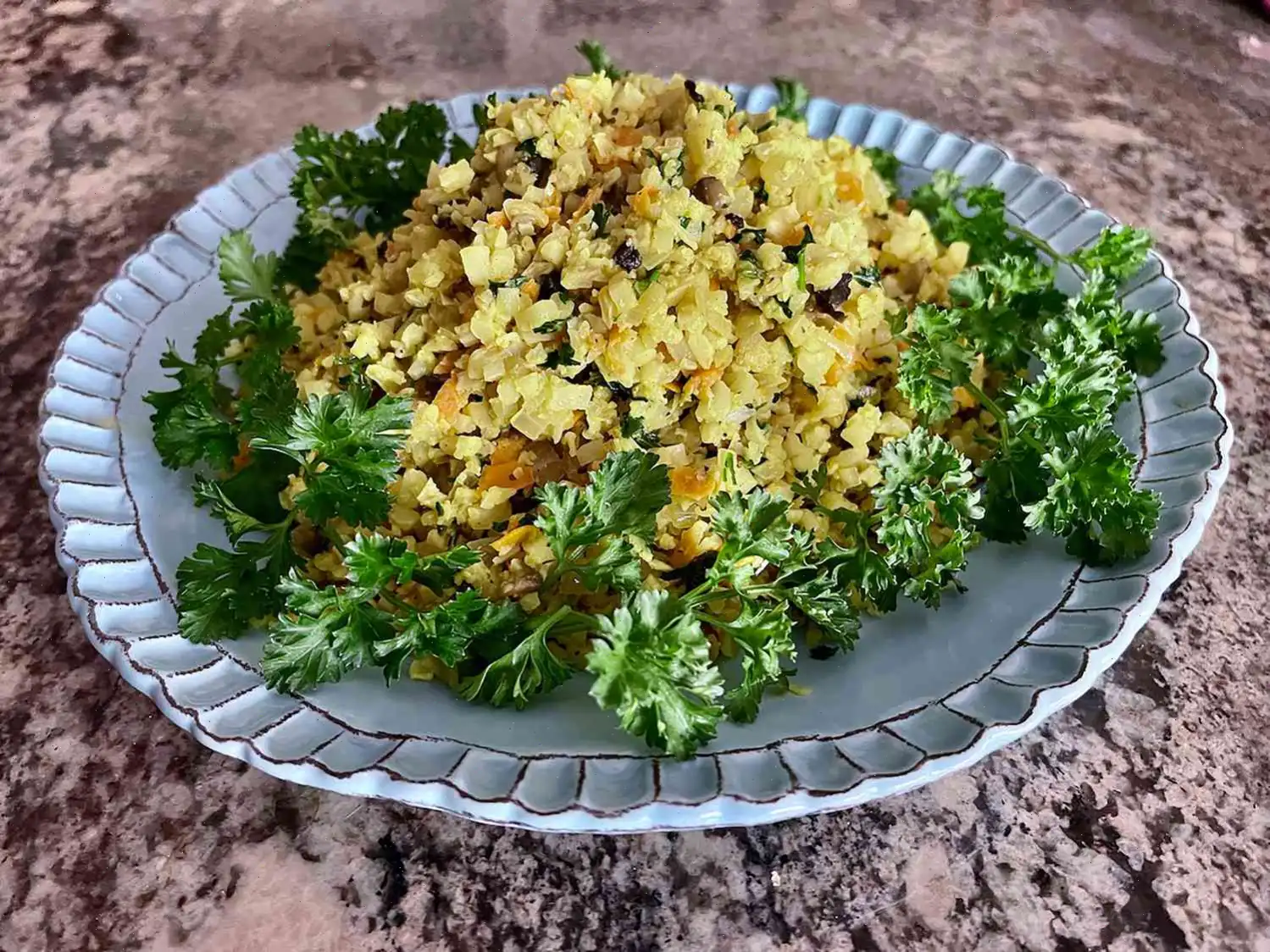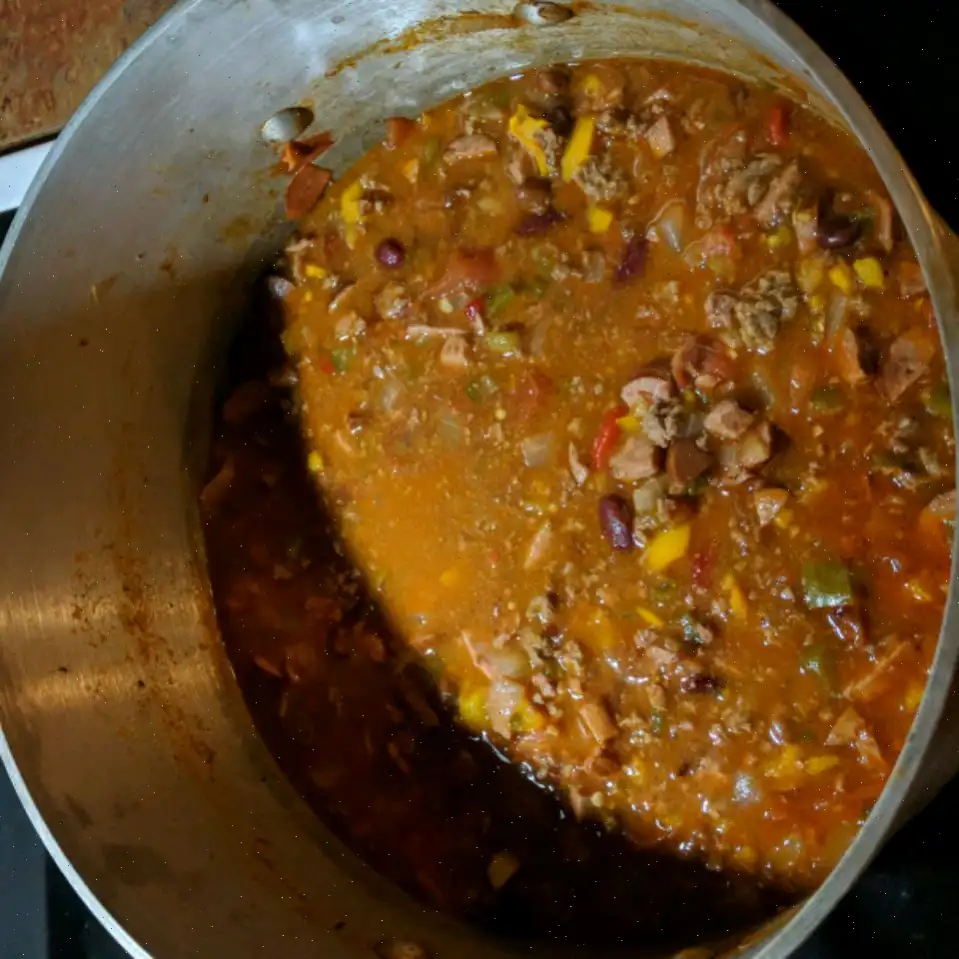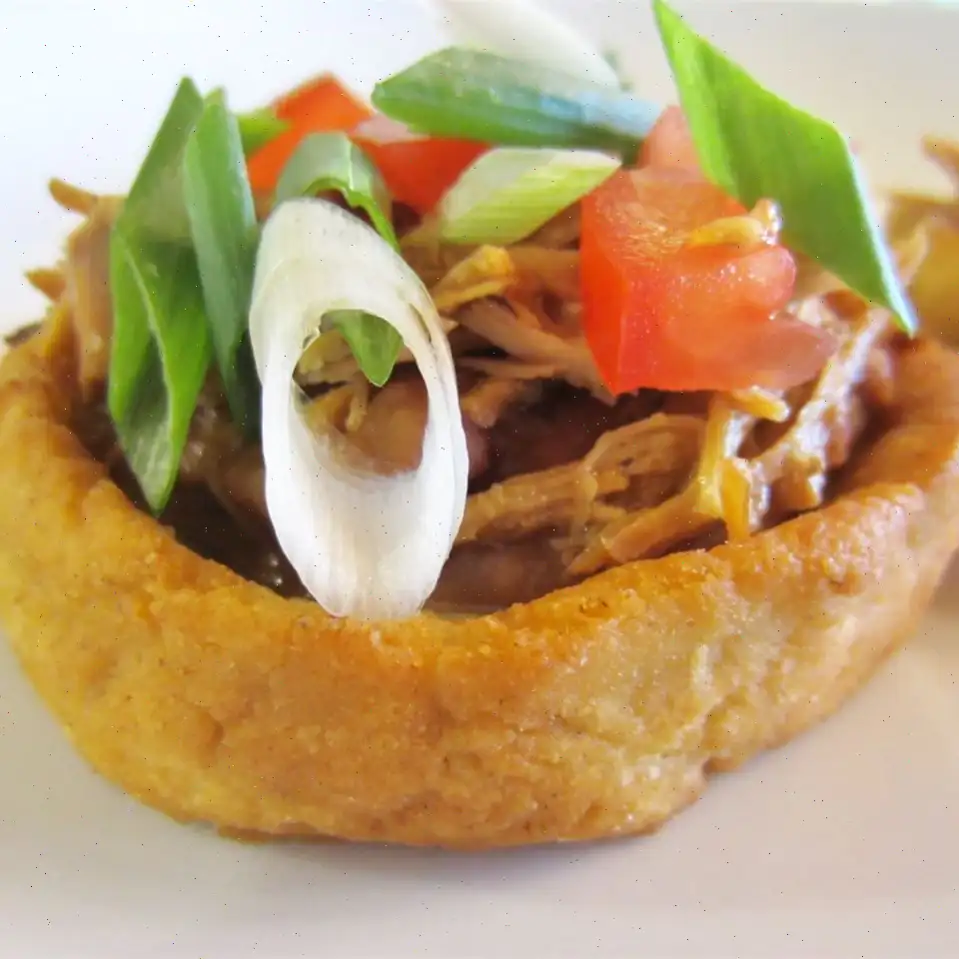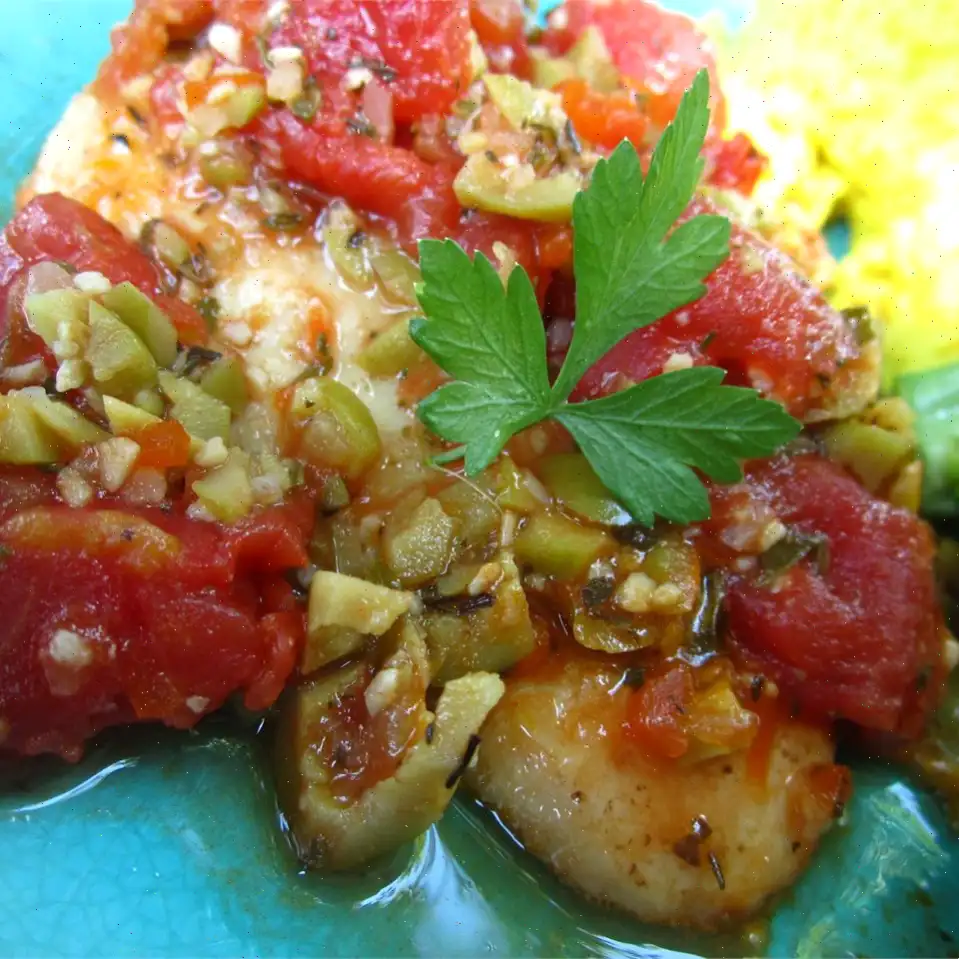
Cauliflower Rice Pilaf Recipe
This savory, healthy dish is the perfect low-carb alternative to regular rice. With a rich combination of flavors from mushrooms, shallots, and aromatic spices, it's quick to prepare and delicious to eat.
Ingredients
- 2 tablespoons unsalted butter
- 2/3 cup diced shallots
- 2/3 cup chopped fresh white mushrooms
- 3 tablespoons shredded carrots
- 1/2 teaspoon turmeric
- 1/8 teaspoon curry powder
- 1/8 teaspoon paprika
- 2 cloves garlic, minced
- 1/2 cup white wine
- 2 teaspoons chicken flavor bouillon base, such as Better Than Bouillon Roasted Chicken Base
- 1 pound frozen riced cauliflower
- Salt and freshly ground black pepper, to taste
- 1/4 cup minced fresh parsley, plus more for garnish
Directions
Step 1: In a skillet, melt the butter over medium heat. Once it begins to sizzle, add the diced shallots and cook for about 2 minutes, or until they become translucent.
Step 2: Add the chopped mushrooms and continue to cook, stirring occasionally, for about 3 minutes until they soften.
Step 3: Add the shredded carrots to the skillet. Then, sprinkle in the turmeric, curry powder, and paprika. Stir everything together and cook for another minute.
Step 4: Add the minced garlic to the pan and cook for about 30 seconds until fragrant.
Step 5: Pour in the white wine and add the chicken flavor bouillon base. Stir until the chicken base has fully dissolved into the liquid. Let it cook for about 3 minutes, stirring occasionally.
Step 6: Add the frozen riced cauliflower to the skillet. Use a fork to break up any clumps of cauliflower. Cook, stirring occasionally, until all the liquid evaporates and the cauliflower becomes tender, about 5 to 8 minutes.
Step 7: Season with salt and freshly ground black pepper to taste.
Step 8: Stir in the minced fresh parsley and transfer the mixture to a serving dish. If desired, garnish with additional parsley before serving.
Cooks Note
Frozen cauliflower tends to release a lot of water as it cooks. Make sure to add only the chicken base without any extra water.
Nutrition Facts
| Nutrition | Per Serving |
|---|---|
| Calories | 93 |
| Total Fat | 4g (6%) |
| Saturated Fat | 3g (13%) |
| Cholesterol | 10mg (3%) |
| Sodium | 287mg (12%) |
| Total Carbohydrates | 9g (3%) |
| Dietary Fiber | 3g (10%) |
| Total Sugars | 4g |
| Protein | 3g (5%) |
| Vitamin C | 42mg (47%) |
| Calcium | 36mg (3%) |
| Iron | 1mg (7%) |
| Potassium | 401mg (9%) |

Recipe by: Brenda Venable
History of Cauliflower Rice Pilaf
Cauliflower rice pilaf is a modern twist on the traditional rice pilaf, a dish with roots in Middle Eastern and Mediterranean cuisine. While pilaf made with rice has been enjoyed for centuries, the rise of low-carb and gluten-free diets has led to creative adaptations using cauliflower as a rice substitute. This dish leverages cauliflowers texture and mild flavor to mimic the experience of eating rice while offering a healthier alternative. It has grown in popularity as a staple in plant-based and keto diets, thanks to its versatility and low-calorie content.
Regional Variations
While cauliflower rice pilaf is commonly associated with American cuisine, variations of pilaf have existed in many cultures, from the Middle East to India, where rice pilaf, or "pilav," is seasoned with spices like turmeric, cinnamon, and cumin. The key difference in the cauliflower version is the substitution of rice with finely grated cauliflower. Some regions add different vegetables, such as peas, or even dried fruits like raisins to enhance the dish's flavor, while others might incorporate various meats or nuts for additional texture and richness.
How Cauliflower Rice Pilaf Differs from Other Rice Dishes
What sets cauliflower rice pilaf apart from its rice-based counterparts is the cauliflower itself. Traditional pilaf typically uses rice, which is starchy and calorie-dense, but cauliflower rice provides a lighter, more nutrient-packed alternative with fewer carbs. Additionally, cauliflower has a subtle taste that allows for the spices and ingredients in the pilaf to shine, making it a great base for flavor-packed dishes. In contrast to pilaf made with white or brown rice, cauliflower rice pilaf is a lower-calorie, lower-carb side dish that appeals to health-conscious eaters without sacrificing flavor.
Where is Cauliflower Rice Pilaf Typically Served?
Cauliflower rice pilaf is often served as a side dish in a variety of settings. It pairs well with grilled meats, fish, and roasted vegetables, making it a popular accompaniment to dishes like roasted chicken, lamb, or beef. It is also an excellent side for vegetarian meals, offering a satisfying yet light option that complements a variety of plant-based proteins. Given its colorful presentation, it's often seen at dinner parties, family gatherings, and special occasions where a healthy, flavorful side dish is desired. In health-conscious or diet-centric restaurants, cauliflower rice pilaf is frequently featured as a lighter alternative to traditional pilaf.
Interesting Facts about Cauliflower Rice Pilaf
- Cauliflower rice is not actually riceit's simply cauliflower thats been grated or processed into rice-sized pieces. This makes it a great option for people looking to reduce their carbohydrate intake.
- Cauliflower is rich in vitamins C and K, fiber, and antioxidants, which contribute to its health benefits, including supporting immune function and reducing inflammation.
- Turmeric, one of the key spices in cauliflower rice pilaf, is known for its anti-inflammatory properties and is often used in Ayurvedic and traditional medicine for its healing qualities.
- Frozen riced cauliflower, as used in this recipe, is a convenient and cost-effective option that is widely available at grocery stores, making this dish easy to prepare year-round.
You can listen to this recipe in AI audio format. Simply click the play button below to listen to the content in a format that suits you best. It’s a great way to absorb information on the go!








